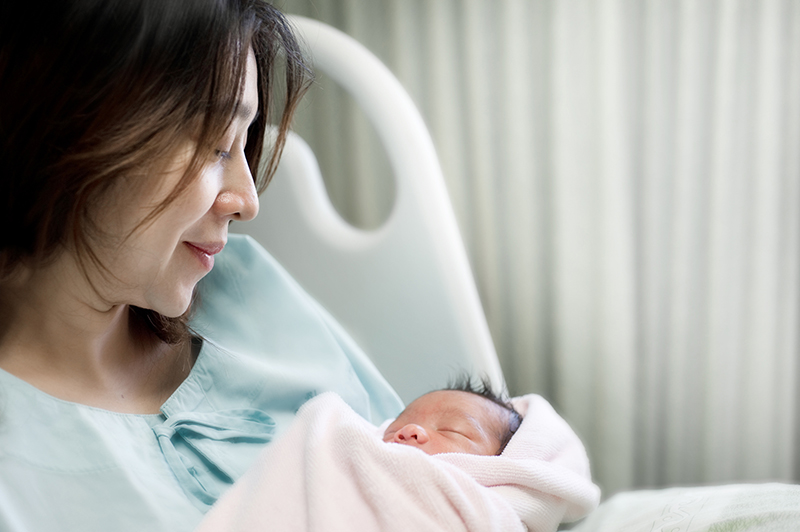Families For Life | Vaginal Birth After C-section

Women who have had a previous uncomplicated lower segment cesarean section (LSCS) and no other problems in the current pregnancy are suitable candidates for VBAC.
What is VBAC?
VBAC is an acronym for Vaginal Birth After Cesarean section.
If I had one previous Cesarean birth, can I have a vaginal delivery when I conceive again?
Women who have had one previous uncomplicated lower segment cesarean section(LSCS) and no other problems in the current pregnancy are suitable candidates for VBAC.
There are, however, several factors to consider:
The previous cesarean section
Current pregnancy
Other medical or surgical problems
The previous cesarean section
There are again several factors to be considered in the previous cesarean section that was performed. These include:
The type of cut made on the womb
The reason for the cesarean section
Complications that may have occurred at the time of the cesarean section
There are typically two types of incision or cuts made in the uterus during the previous cesarean section — classical or lower segment (more common) type.
A classical incision refers to a vertical cut in the upper part of the uterus. Women who had a previous classical cesarean section are not suitable for VBAC as there is a high risk of uterine rupture or tear.
A lower segment cesarean section (LSCS) refers to a horizontal cut in the lower part of the uterus (see Figure 40.8 and Figure 40.9). This is associated with a lower risk of uterine rupture or tear compared to a classical cesarean section. Patients with a previous LSCS may be able to opt for VBAC.
If the reason for the previous cesarean section is a recurring one such as a contracted pelvis (i.e. the pelvis is too constricted to allow passage of the baby), then the patient is not suitable for VBAC.
If the previous cesarean section was complicated by unexpected tears in the uterus, your doctor will advise a repeat cesarean section in the subsequent pregnancy. VBAC should not be considered in such a case owing to a higher chance of uterine rupture at delivery.
Current pregnancy
If certain conditions exist that prevent a safe vaginal delivery in the first place, a VBAC will not be suitable. These conditions include a low-lying placenta or any abnormal presentations of the baby such as breech, oblique or transverse lie.
Other medical or surgical problems
Certain medical conditions such as certain heart diseases or severe high blood pressure will prevent the woman from enduring the physical stress of a vaginal delivery. Previous operations on the uterus to remove large or multiple fibroids may result in weakening of the muscle wall of the uterus. This can increase the likelihood of uterine rupture during labour. In these above-mentioned situations, VBAC will not be suitable.
Frequently asked questions (FAQs)
Q: What is the chance of a successful VBAC?
The chance of a successful VBAC resulting in a natural delivery may be up to 60–70%. This is generally higher for women who have had previous successful vaginal deliveries.
Q: What are the advantages of a VBAC?
As the chance of a successful vaginal delivery is high in properly selected cases, you are able to avoid a repeat cesarean section — thus avoiding the associated surgical and anesthetic risks. In addition, it gives you an option to undergo another VBAC in the subsequent pregnancy.
Q: What are the complications associated with VBAC?
The main concern is the risk of uterine rupture or tear. The incidence of uterine rupture is about 0.5% after one previous lower segment cesarean section, and 4–9% after a previous classical cesarean section. Even if you have had a successful VBAC in the previous pregnancy, it does not negate the existing risks of uterine rupture in your current pregnancy.
Uterine rupture can be life-threatening for both mother and child. It may need surgical removal of the uterus (hysterectomy). If there is uterine rupture, up to 30% of babies die or suffer permanent brain damage.
If you desire VBAC and your doctor deems you suitable for this, you will be allowed a short trial of labour. If the labour is not progressing as well as expected, or if the baby’s heart beat is worrying, then an emergency cesarean section will be carried out. In most instances, spontaneous labour is awaited as there are risks associated with an induction of labour (read the article on Induction of Labour).
Q: Can I have epidural pain relief if I opt for VBAC?
Yes, you can. There is no evidence to suggest that this is dangerous for you or your baby.
Q: What are the precautions for women opting for VBAC?
Women undergoing a VBAC should choose to have the labour conducted in a birthing center where an emergency cesarean section can be carried out within 30 minutes, should the need arise. The need to deliver the baby quickly may occur when there is evidence of possible uterine rupture during the course of labour.
Code Green is a “Crash Code Activation System” when a public announcement within the hospital is used to immediately mobilize the relevant medical and nursing staff to ensure the best possible outcome for mother and baby. The system, unique to KK Hospital, is used when time is of essence. A ‘Code Green’ is for immediate cesarean section when the relevant staff of the delivery suite and operating theater, are activated. This in-house round-the-clock team of specialists includes obstetricians, anesthetists as well as neonatologists.
Explore more
By Dr TAN Thiam Chye, Dr TAN Kim Teng, Dr TAN Heng Hao, Dr TEE Chee Seng John,
KK Women’s and Children’s Hospital
Sources:
The New Art and Science of Pregnancy and Childbirth, World Scientific 2008.
Copyright © 2023 HealthHub.sg. All rights reserved.